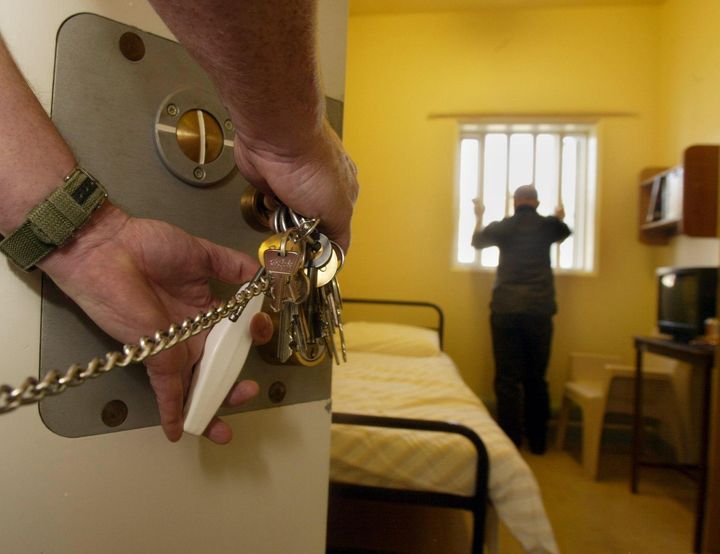
Another week, and our prisons continue to hit the headlines for all the wrong reasons—and so they should. The publication last week of cataclysmic figures showing that violence and self-harm continue to rise rightly received widespread coverage in the media.
Previous records have been smashed. Self-harm and assaults have risen by 20% in only a year, and self-inflicted deaths are also going up again after a disappointingly brief dip. Taken as a whole, the prison system appears to be in freefall.
However an equally concerning report was also published last week, almost unnoticed. For anyone with an interest in prisons—whether they live or work there, have family inside, or simply care about the welfare of those that do—its findings make for alarming reading. The National Audit Office published an overview of the Ministry of Justice, summarising its financial situation and performance against the objectives it has set itself. Its content, though couched in dispassionate terms, is startling given the crisis described by the statistics on violence.
The NAO describes a department that has two specific objectives relating to prisons. The first is to “get the basics right”. So one might expect that the Ministry of Justice would have a definition of “the basics”. It doesn’t. What ministers have said has concentrated on the physical condition of prisons—mending windows smashed due to lack of ventilation during a long hot summer, and ensuring that cells which should have been taken out of commission years ago are brought up to scratch. Few would argue against such necessary improvements—a clean properly equipped cell is a basic, but so is the right to spend a reasonable amount of time not cooped up in it.
As it stands, even on that limited definition, the NAO’s findings offer little comfort. It shows that the cost of the backlog of maintenance work in prisons—at an estimated £860m—is more than double what the department was actually able to spend in 2017/18. Meanwhile, a commitment to replace the worst of our crumbling Victorian prison estate has yet to see a single brick laid, despite being announced three years ago. In fact, the capital money put aside for that programme is being quietly siphoned off each year to pay salaries and other day to day running costs—to the tune of £235m last year alone. Yet the department expects to spend an extraordinary £1bn more in 2018/19 than its allocated running costs budget. A short term injection of cash, announced in this week’s budget, will see an extra £30 million for prisons this financial year and will be welcome—but with further cuts already in the pipeline for 2019/20 this is no long term fix.
The second specific departmental objective on prisons is “to ensure a sustainable prison population”. It’s good that there is at long last a political acceptance that ministers have some control over the size of our prison population. For too long, policy makers and their masters have abdicated their responsibility, suggesting that who goes to prison and for how long is somehow entirely determined by our courts, and nothing to do with government. That’s always been an evasion—the overwhelming reason our prison population is so high is that government legislation has consistently pushed up sentence lengths. The Prison Reform Trust estimates that, without that legislation, we would currently have a prison population of around 70,000. That’s 13,000 less than we currently have—enough to eliminate the problem of overcrowding in our prisons.
What we still lack, however, is any plan to get to that sustainable level of imprisonment. There’s rarely much resistance to individual proposals to increase maximum penalties. Michael Gove’s only tangible impact on the prison population is likely to be in his current capacity as Secretary of State for the Environment—supporting a tenfold increase in the penalty available for serious animal cruelty offences—rather than any legacy from his time as justice secretary. David Gauke, one of Gove’s three successors in less than two years, has expressed support for a presumption against prison sentences of less than a year and, by general consent, “gets” the strategic issues. But a presumption against short prison sentences, and—much more importantly—a reversal of the gross inflation in sentences for serious offending seen during the last two decades, require parliamentary time which he hasn’t yet secured.
It’s very easy to sympathise with the embattled prisons minister, Rory Stewart, who has given himself over to a project to get intimately involved with the management of 10 prisons—rather than do battle with the Treasury and his own party over the need for more resources and fewer prisoners in the system as a whole. But there is little point setting strategic objectives for a department of state unless you are prepared to define what achieving them actually looks like on the ground—and then deliver the resources and a coherent plan to deliver them. The NAO’s report should serve as a stark reminder to ministers of the political responsibilities that only they can meet.
Peter Dawson is Director of the Prison Reform Trust and a former prison governor
